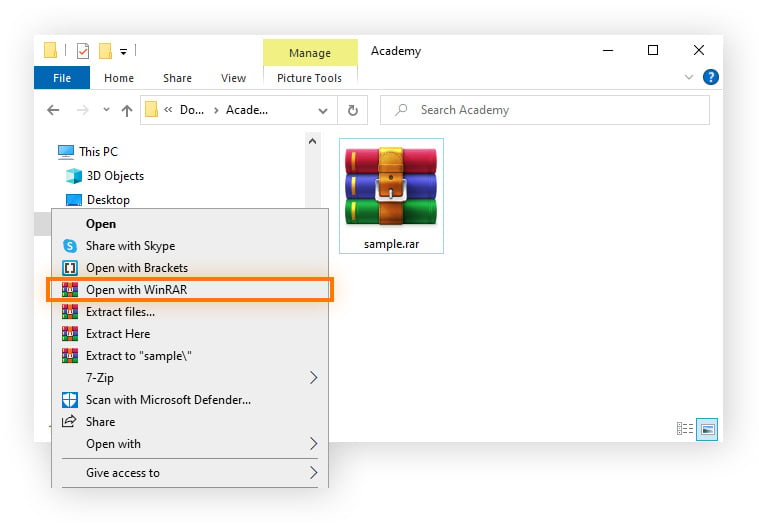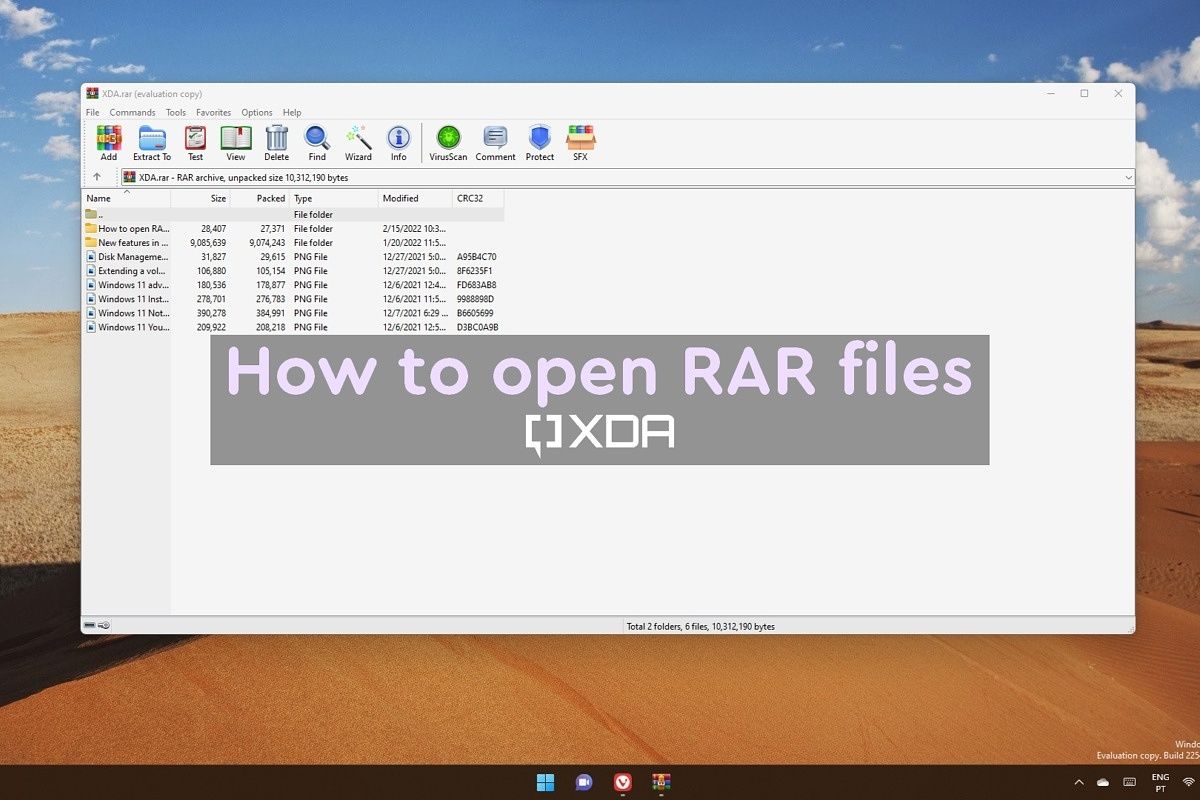Best Tips About How To Extract Rar Files

How To Extract Files In Winrar At Ali Purser Blog
Unlocking the Secrets of RAR Files
1. What's the Deal with RAR Files Anyway?
Ever stumbled upon a file with a ".rar" extension and felt a surge of confusion? You're not alone! RAR files are essentially compressed archives, like ZIP files, but with a few extra tricks up their sleeves. Think of them as digital packages that bundle together multiple files or folders into a single, more manageable unit. This makes them perfect for sharing large files over the internet or simply organizing your digital clutter. They are convenient and compress those hefty files into smaller sizes — a total lifesaver when your internet connection isn't exactly lightning fast.
Now, why use RAR instead of ZIP? Well, RAR often boasts better compression ratios, meaning it can shrink files down even further. Plus, it supports features like splitting large archives into smaller parts (handy for emailing) and adding recovery records to protect against data corruption. It's like the Swiss Army knife of file compression!
But, here's the catch: you can't just open a RAR file like a regular folder. You need a special program to unpack its contents. That's where extraction comes in, and that's what we're here to explore.
So, buckle up! We're about to demystify the process of extracting RAR files, turning you from a RAR novice into a seasoned pro. It's easier than you might think, I promise.

How To Open RAR Files On Windows, Mac, And Mobile
Choosing Your Weapon
2. Picking the Right Software for the Job
Alright, to wrestle those RAR files into submission, you're going to need the right tools. Luckily, there are plenty of options out there, both free and paid. Let's take a look at some of the most popular contenders.
First up, we have the granddaddy of RAR extraction, WinRAR. It's been around forever, and it's still a solid choice. WinRAR is a paid program, but it offers a free trial that basically lasts forever (it just reminds you to buy it every time you use it). It's packed with features and supports a wide range of archive formats, making it a versatile option.
If you're looking for a completely free solution, 7-Zip is your best bet. It's open-source, lightweight, and handles RAR files (and pretty much every other archive format) with ease. While its interface might look a bit dated, it's incredibly powerful and reliable.
Another worthy contender is PeaZip. It's another free and open-source option that offers a more modern and user-friendly interface than 7-Zip. It also boasts some advanced features like secure deletion and file splitting, making it a great all-around choice.
Finally, for Mac users, The Unarchiver is a simple and free utility that seamlessly integrates with macOS. It's perfect for quickly extracting RAR files and other archives without any fuss. I personally prefer this for a quick extract on macOS.

The Extraction Process
3. Unleashing the Contents of Your RAR Files
Now that you've chosen your weapon of choice, let's get down to the nitty-gritty (oh wait, we're not supposed to say that!). Let's get down to the actual process of extracting those RAR files. The steps are generally similar across different programs, so you should be able to follow along regardless of which tool you're using.
Step 1: Locate the RAR File. Find the RAR file you want to extract. It'll have a ".rar" extension. Double-clicking on it should automatically open it with your installed RAR extraction software (if you've associated the file type correctly). If not, right-click on the file and choose "Open with" and select your preferred program.
Step 2: Choose Your Extraction Destination. Once the RAR file is open in your chosen software, you'll usually see a list of the files and folders contained within. Look for an "Extract" button or a similar option. Clicking this will usually prompt you to choose a destination folder for the extracted files. Pick a location on your computer where you want the extracted files to be placed. Creating a new folder specifically for the extracted files is always a good idea to keep things organized.
Step 3: Initiate the Extraction. After you've selected the destination folder, click "OK" or "Extract" to begin the extraction process. The program will then start unpacking the files from the RAR archive and placing them in the chosen destination. The extraction time will depend on the size of the archive and the speed of your computer. A progress bar will usually be displayed to show you how far along the extraction process is.
Step 4: Enjoy Your Extracted Files! Once the extraction is complete, navigate to the destination folder you selected. You should now see all the files and folders that were originally contained within the RAR archive. Congratulations, you've successfully extracted your RAR file!

How To Open And Extract RAR Files On Your PC
Dealing with Multi-Part RAR Archives
4. Conquering Split Archives
Sometimes, you might encounter RAR archives that are split into multiple parts, usually named something like "file.part1.rar," "file.part2.rar," and so on. These are used to break up large archives into smaller, more manageable chunks for easier sharing or storage. Don't panic! Extracting these multi-part archives is still relatively straightforward.
To extract a multi-part RAR archive, simply make sure that all the parts are located in the same folder. Then, open the first part (the one with the ".part1.rar" extension) with your RAR extraction software. The software should automatically detect the other parts and extract the entire archive as a single unit.
If the software doesn't automatically detect the other parts, you might need to manually add them. Look for an "Add" or "Append" button in your RAR extraction software and select the remaining parts of the archive. Once all the parts are added, you can proceed with the extraction as usual.
Important Note: All the parts of the multi-part archive must be present and in the same folder for the extraction to work correctly. If any part is missing or corrupted, the extraction will fail.

Extracting Files
Troubleshooting Common RAR Extraction Issues
5. Overcoming Hurdles and Roadblocks
Even with the best instructions, sometimes things just don't go according to plan. Here are some common issues you might encounter when extracting RAR files and how to troubleshoot them.
Issue 1: Corrupted Archive. If you get an error message saying that the archive is corrupted, it means that some of the data within the RAR file is damaged. This can happen during download or storage. Try downloading the archive again from the original source. If that doesn't work, ask the person who shared the archive to re-upload it. Sometimes, RAR archives contain recovery records that can help repair minor corruption. Check your RAR extraction software for a "Repair" or "Recover" option.
Issue 2: Missing Parts in a Multi-Part Archive. As mentioned earlier, all parts of a multi-part archive must be present for extraction to work. Double-check that you have all the parts and that they are all in the same folder. If any part is missing, you'll need to obtain it from the original source.
Issue 3: "Unknown Archive Type" Error. This usually means that your RAR extraction software doesn't support the specific type of archive you're trying to extract. Make sure that your software is up to date and that it supports RAR files. If you're still getting the error, try using a different RAR extraction program.
Issue 4: Password Protected Archive. Some RAR archives are password-protected for security reasons. If you encounter one of these, you'll need to obtain the password from the person who created the archive. The RAR extraction software will usually prompt you to enter the password before extraction can begin.

Free Windows Rar Extractor Forsalehoreds
Frequently Asked Questions (FAQs)
6. Your Burning RAR Questions Answered
Still scratching your head about RAR files? Here are some frequently asked questions to clear up any remaining confusion:
Q: Is it safe to extract RAR files from unknown sources?
A: Just like with any file you download from the internet, there's always a potential risk. Be cautious when extracting RAR files from untrusted sources, as they could contain malware. Always scan the extracted files with your antivirus software before opening them.
Q: Can I create my own RAR files?
A: Absolutely! Programs like WinRAR and 7-Zip allow you to create your own RAR archives. This is useful for compressing large files, organizing your data, or sharing multiple files as a single unit.
Q: Do I need WinRAR to extract RAR files?
A: No, you don't need WinRAR. While it's a popular option, there are plenty of other free and paid RAR extraction programs available, such as 7-Zip and PeaZip.
Q: What's the difference between RAR and ZIP files?
A: Both RAR and ZIP are popular archive formats, but RAR often offers better compression ratios and supports features like splitting archives into multiple parts and adding recovery records.